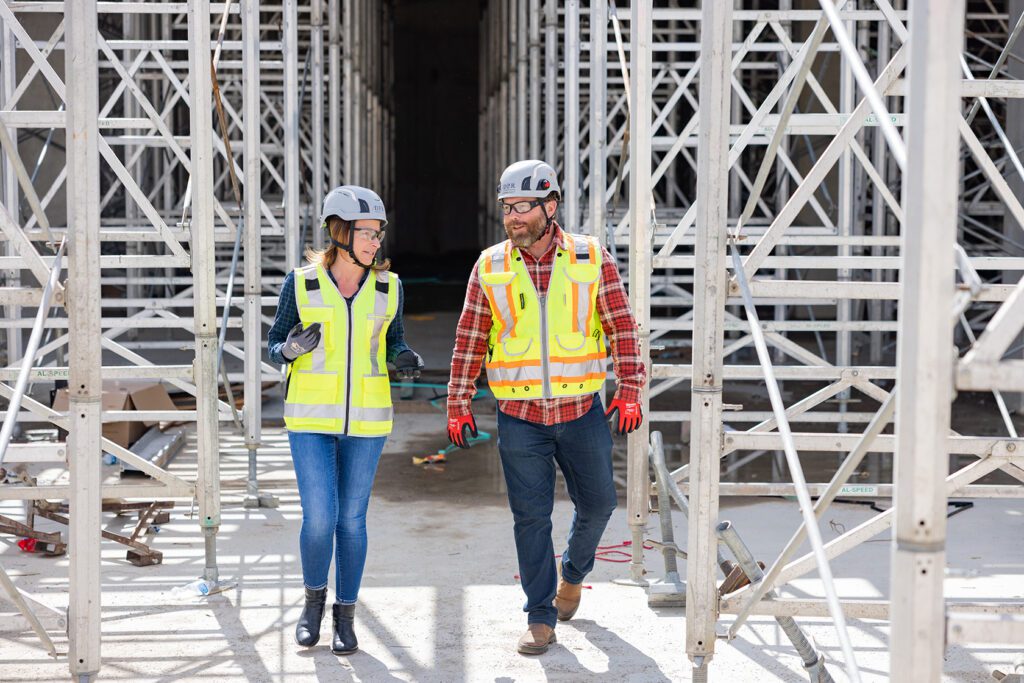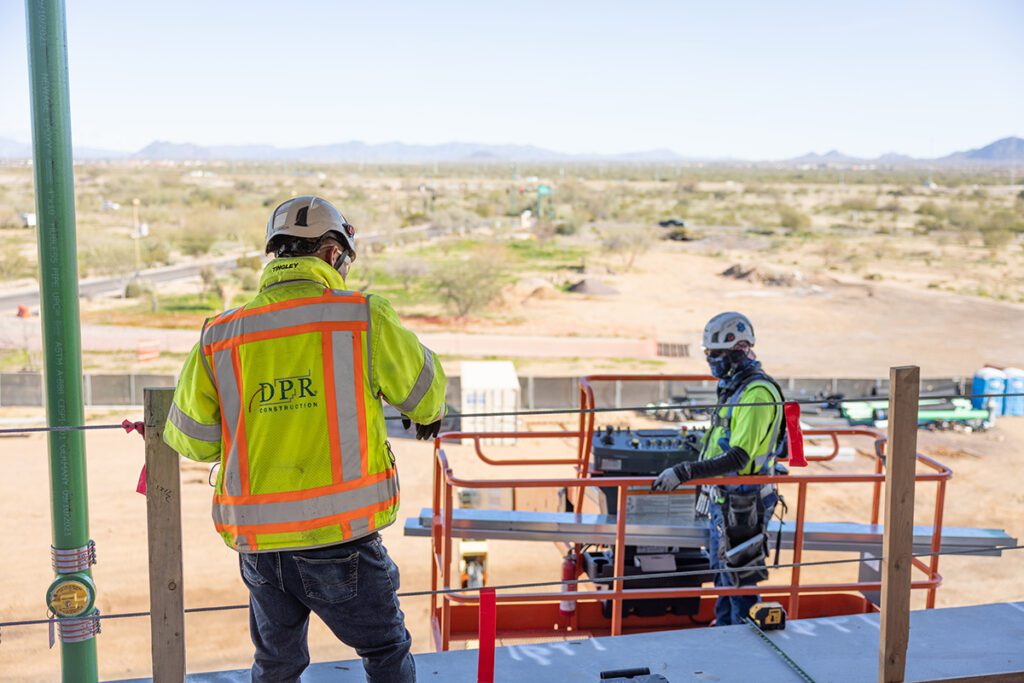Workers face new PPE rules and options
Could the construction industry’s iconic yellow hardhat become a thing of the past?
Many large general contractors and a smattering of smaller companies are mandating their employees switch from traditional Type 1 hardhats to new, helmet-style, Type 2 hats.
“Old-style hardhats were designed for top impact. They protected the worker from an object falling on the top of their head,” said Chris Littler, a safety leader with DPR Construction. “The new hardhats are more like football or bike helmets. They provide protection against top, side and rear impacts. Also, many include a chin strap.

Typically, if a worker falls, one of the first things that happens is their hardhat falls off. The new helmets don’t.”
DPR – which self-performs drywall, concrete, waterproofing and other work – mandated the switch to helmet-style hard hats nearly two years ago. The response from workers was mixed.
“Most of our folks who are consistently at heights — on ladders, scissor lifts or boom lifts and are using fall protection — jumped on board fairly quickly because they know the hazards associated with a fall and their hardhat falling off,” Littler said.
Other employees felt the full, foam cap inside the new hats was too warm and less comfortable than the traditional, suspension-style hat.
Jason Sears of Diversified Safety Services has seen some clients’ employees raise similar objections to the feel and look of the new hats.
“They think they look like safety nerds,” Sears said. “Some hats have fancy, flip-down visors and it’s not the blue-collar, construction worker image they want to portray. But this is not a fashion show. It’s a construction job.”
It’s a change that all construction workers may have to make, however. OSHA is currently researching the helmet-style hardhats and considering making them a PPE requirement.
Cost is also a consideration. While traditional hardhats can be acquired for $25, the new, helmet-style hats cost from $60 to $150 each.
And that’s not the only change that could occur in PPE regulations. OSHA is also assessing a proposed regulation that would require proper fitting PPE for construction workers. It could apply to hats, vests, glasses, gloves, work boots, respirators and fall-protection gear, and go into effect within five years.
Earlier this year, DPR took efforts to ensure it could source properly fitting PPE for women and pregnant women, Littler said. Manufacturers are coming up with greater options for fire retardant gear for women and hardhats that accommodate ponytails.
Meanwhile, product developments and industry trends are causing other changes in PPE used on construction sites.
“We really try to push glove use for pretty much all activities because our hands are the tool we always use and our hands always have some level of exposure,” Littler said. That effort is being aided by the fact that “glove manufacturers have really upgraded their products. Some of the cut-level gloves, even as high as level four, are very nice and thin and nimble now. With some of them, you hardly even feel that they are on your hands.”
“There is some new self-rescue fall protection gear on the market now that is cool,” Sears said. “If you fall off a leading edge in the harness, there is a mechanism that will allow you to carefully lower yourself to the next level and prevent any kind of harness trauma. If you hang in a harness for more than 15 minutes, you can suffer constricting of the main arteries in the legs.”
Poor air quality days this summer, caused by the Canadian wildfires, prompted some contractors to expand air quality monitoring on job sites and require greater use of respirators. Debates about when safety glasses are or aren’t required have convinced some safety consultants and contractors to recommend glasses use at all times on job sites. And climate change is prompting manufacturers to come out with more products designed to help workers withstand extreme temperatures.
For the image-conscious construction worker, there are also safety products to meet their aesthetics.
“A lot of companies are coming out with products that are geared to the next generation,” Sears said. “They provide the same level of protection but they look cool. For example, standard safety glasses may have a cool color, print or design, and guys are buying them up.”
